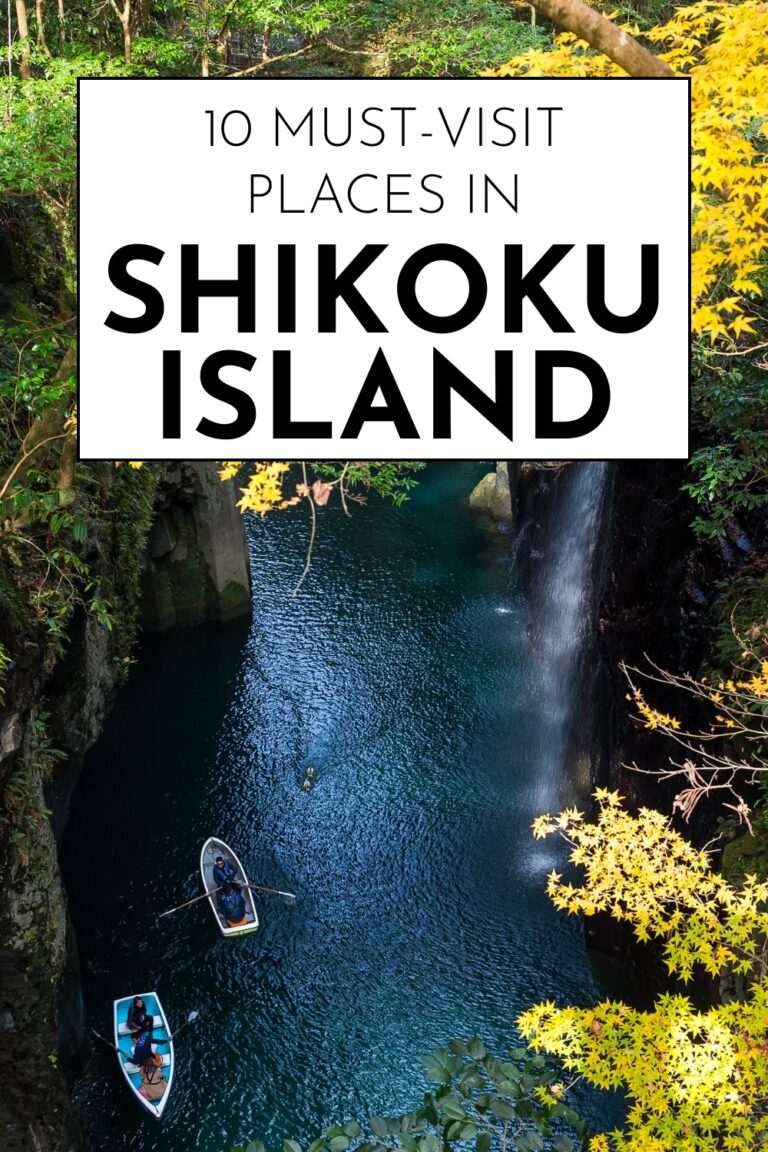Shikoku Island, Japan’s smallest main island, offers an incredible blend of spiritual pilgrimage routes, stunning natural landscapes, and authentic Japanese culture. Often overlooked by international travelers, this hidden gem provides a more intimate and traditional Japanese experience away from the crowded tourist circuits of Tokyo and Kyoto.
Known as the birthplace of the famous 88-temple pilgrimage and home to some of Japan’s most dramatic coastlines, Shikoku captivates visitors with its peaceful temples, crystal-clear rivers, and warm hospitality. The island’s four prefectures – Ehime, Kagawa, Kochi, and Tokushima – each offer unique attractions that showcase different aspects of Japanese heritage and natural beauty.
From ancient castle towns that have stood for centuries to pristine beaches where loggerhead turtles nest, Shikoku presents a slower, more contemplative side of Japan. The island’s compact size makes it perfect for exploration, whether you’re seeking spiritual enlightenment on pilgrimage paths or adventure in its rugged mountains and valleys.
Let’s discover the ten most remarkable destinations that make Shikoku an essential stop for travelers seeking authentic Japanese experiences.
1. Matsuyama Castle – Historic Hilltop Fortress
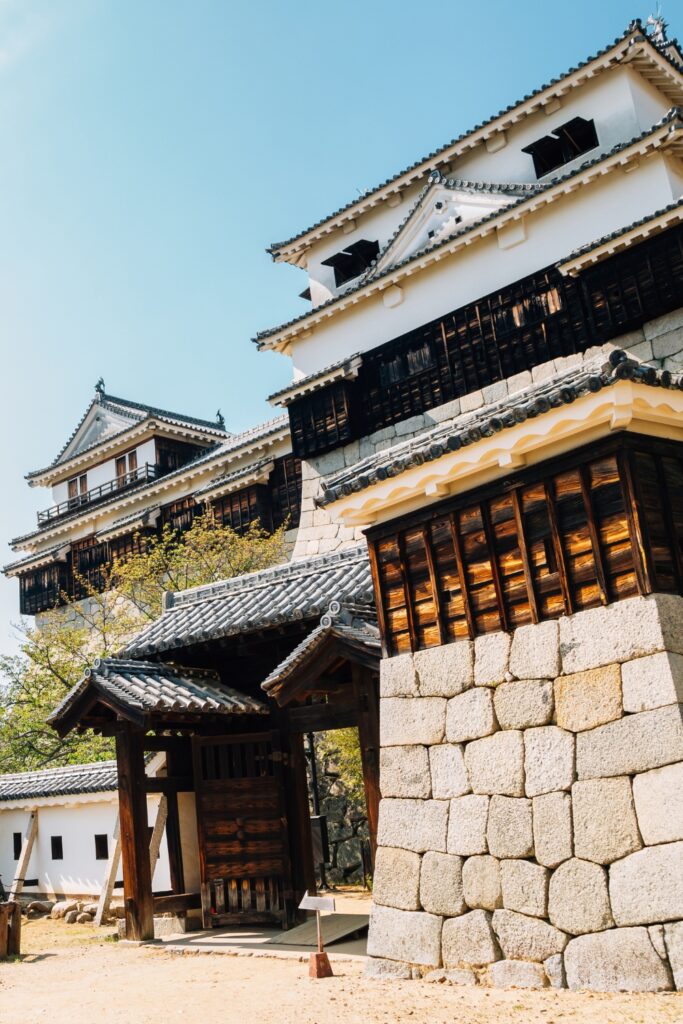
Perched majestically on Mount Katsuyama, Matsuyama Castle stands as one of Japan’s twelve remaining original castles and Shikoku’s most iconic landmark. Built in 1603, this impressive fortress offers panoramic views over Matsuyama city and the Inland Sea beyond.
Architectural Marvel and Historical Significance
The castle represents one of Japan’s finest examples of hilltop fortress architecture. Its three-story main keep, connected by a series of defensive walls and gates, demonstrates the sophisticated military engineering of the Edo period. The castle’s strategic position provided excellent defense while showcasing the power of the Matsudaira clan.
Unlike many Japanese castles that are modern reconstructions, Matsuyama Castle retains its original wooden structure and authentic architectural details. The climb to the castle involves either a scenic walk through cherry tree-lined paths or a ride on the castle’s ropeway system.
Seasonal Beauty and Cultural Activities
Spring transforms the castle grounds into a pink wonderland when over 200 cherry trees bloom simultaneously. The castle becomes a popular hanami (cherry blossom viewing) destination, with locals and visitors gathering for picnics beneath the blossoms.
Throughout the year, the castle hosts traditional festivals, tea ceremonies, and cultural demonstrations. The surrounding park provides peaceful walking paths and traditional gardens that complement the castle’s historical atmosphere.
Best time to visit: Spring (March-April) for cherry blossoms, autumn (November) for fall colors Key highlights: Original wooden keep, panoramic city views, cherry blossoms, ropeway access Entry fee: 520 yen for adults
2. Iya Valley – Hidden Mountain Gorge
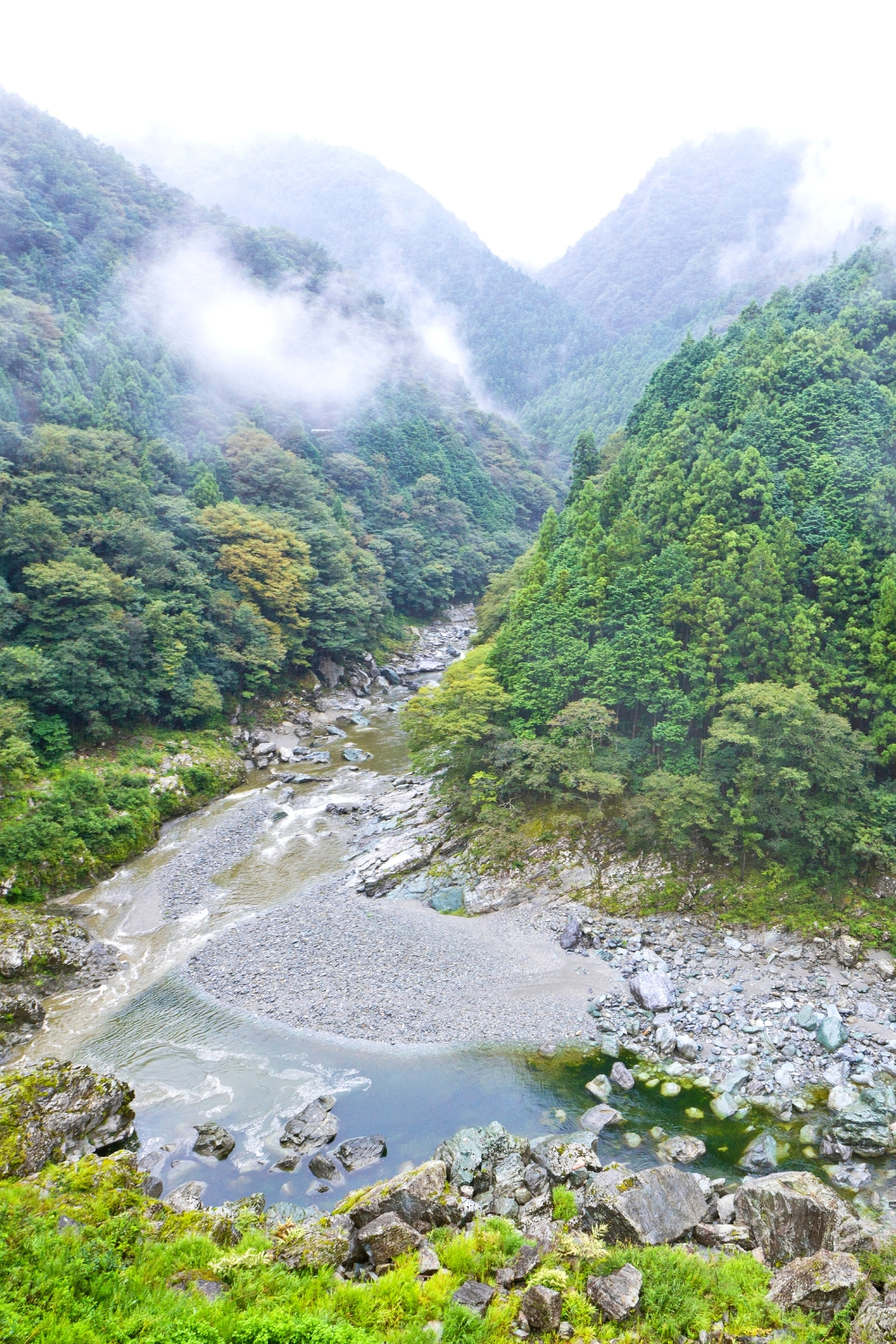
The remote Iya Valley in Tokushima Prefecture offers one of Japan’s most dramatic mountain landscapes, featuring deep gorges, emerald rivers, and traditional vine bridges that seem to hang impossibly over rushing waters below.
Ancient Vine Bridges and Natural Wonders
The valley’s famous kazurabashi (vine bridges) were originally built by the Heike clan warriors as escape routes that could be quickly cut if enemies approached. Today, three vine bridges remain, with the main Iya Kazurabashi stretching 45 meters across the gorge at a height of 14 meters.
Crossing these swaying bridges requires courage, as gaps between the wooden planks allow clear views of the rushing river below. The bridges are rebuilt every three years using traditional techniques and mountain vines, maintaining their authentic construction methods.
Pristine Nature and Hot Springs
The Iya Valley’s isolation has preserved its natural beauty remarkably well. Crystal-clear rivers wind through steep-sided gorges covered in pristine forest. The area offers excellent hiking opportunities, from gentle riverside walks to challenging mountain trails.
Hidden hot springs (onsen) dot the valley, including the famous Iya Onsen hotel built into the cliff face. These natural hot springs provide the perfect way to relax after exploring the valley’s rugged terrain.
Best time to visit: May-October for hiking, autumn for stunning fall colors Main attraction: Kazurabashi vine bridges Activities: Bridge crossing, hiking, hot springs, river activities Access: 2 hours by car from Tokushima city
3. Ritsurin Garden – Landscape Perfection
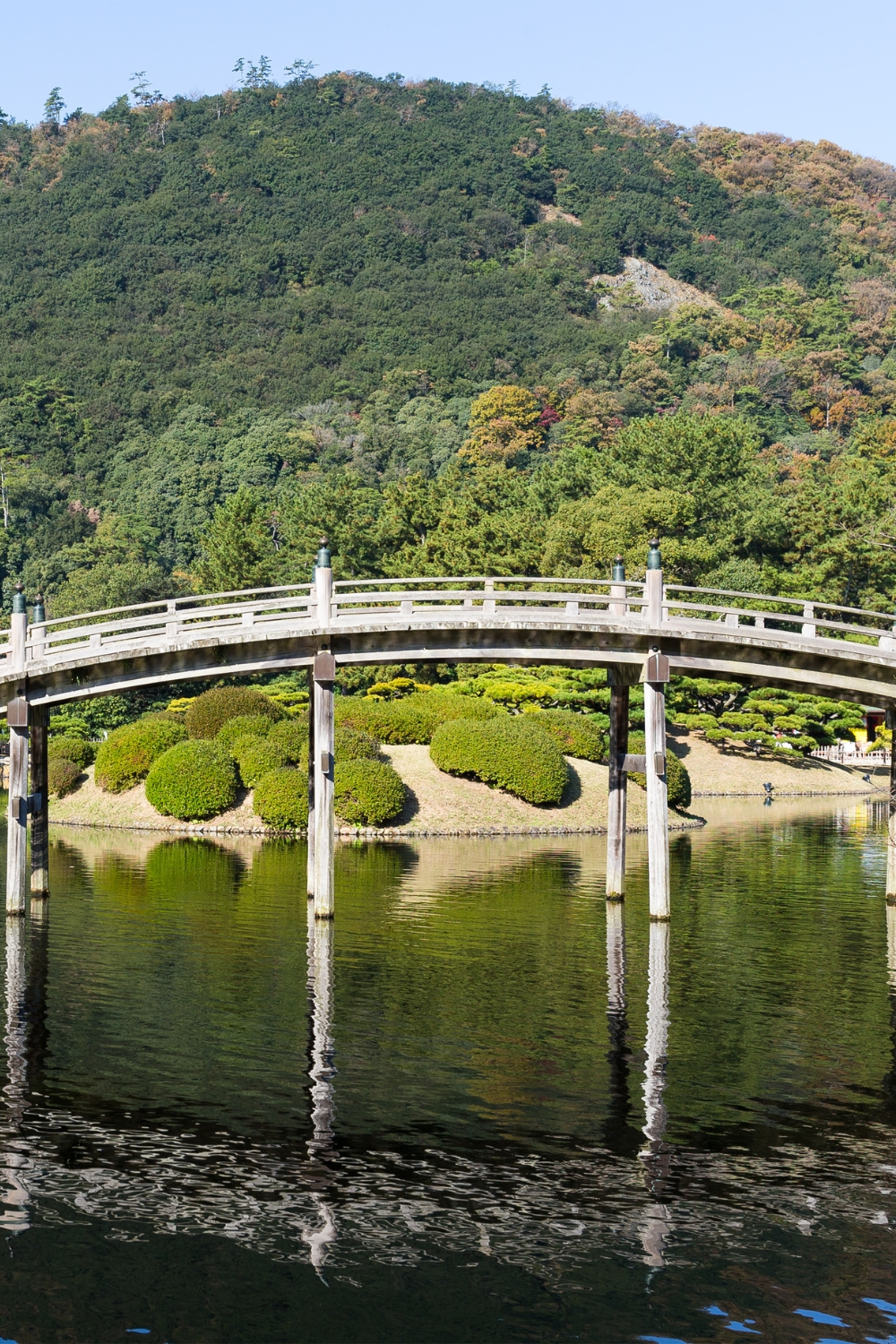
Ritsurin Garden in Takamatsu represents the pinnacle of Japanese landscape garden design, featuring meticulously maintained traditional gardens that have been refined over 400 years. This sprawling garden complex showcases the art of borrowed scenery using Mount Shiun as a dramatic backdrop.
Historical Development and Design Philosophy
Construction of Ritsurin Garden began in the 1620s under the Matsudaira clan and continued for over a century. The garden demonstrates the Japanese principle of “shakkei” (borrowed scenery), incorporating distant mountains into the garden’s composition to create the illusion of infinite space.
The garden’s design reflects different historical periods and styles, from formal Edo-period landscapes to more naturalistic Meiji-era additions. Six ponds and thirteen artificial hills create varied scenery that changes dramatically with the seasons and viewing angles.
Seasonal Transformations and Cultural Experiences
Each season brings distinct beauty to Ritsurin Garden. Spring cherry blossoms reflect in still pond waters, summer brings lush green landscapes, autumn creates fiery red maple displays, and winter offers serene snow-covered scenes.
Traditional tea houses within the garden serve matcha and Japanese sweets while providing contemplative views over the landscape. Early morning visits often reward visitors with misty, ethereal scenes that epitomize Japanese aesthetic principles.
Size: 75 hectares (one of Japan’s largest traditional gardens) Best features: Borrowed scenery, seasonal changes, traditional tea houses Cultural activities: Tea ceremony, traditional boat rides, garden tours Recognition: Special Place of Scenic Beauty designation
4. Dogo Onsen – Japan’s Oldest Hot Spring
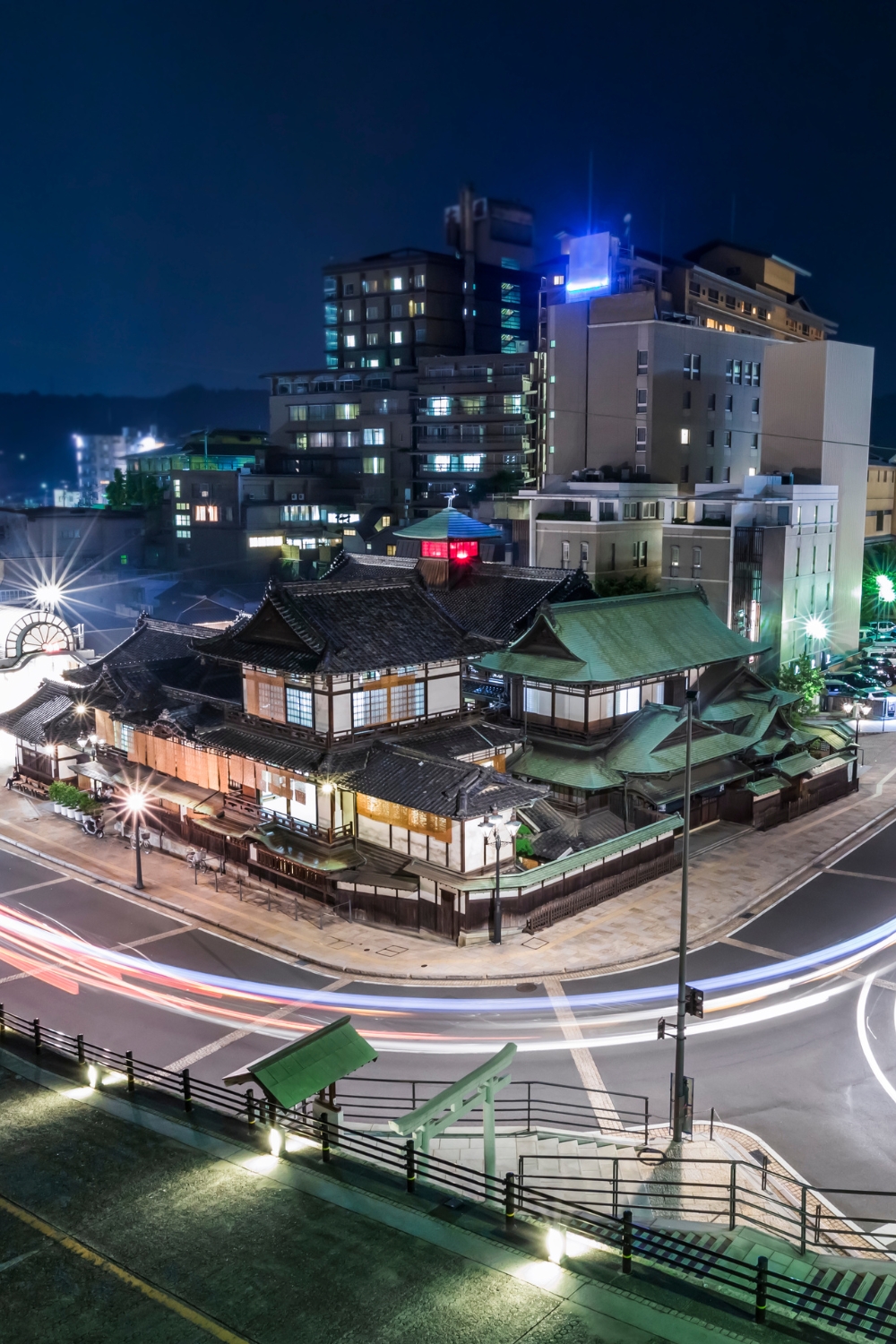
Dogo Onsen in Matsuyama claims the distinction of being Japan’s oldest hot spring resort, with a history spanning over 3,000 years. This legendary bathing complex inspired the bathhouse in Studio Ghibli’s “Spirited Away” and continues to attract visitors seeking authentic Japanese onsen culture.
Ancient Origins and Literary Connections
According to legend, Dogo Onsen was discovered when a white heron was seen healing its injured leg in the warm spring waters. The hot spring appears in Japan’s oldest historical texts, including the 8th-century Chronicles of Japan, establishing its importance in Japanese culture.
The main bathhouse building, constructed in 1894, represents a masterpiece of traditional Japanese architecture. Its three-story wooden structure, crowned with a distinctive tower, has been carefully preserved and continues to function as it did over a century ago.
Authentic Bathing Culture and Rituals
Dogo Onsen maintains traditional bathing customs that have disappeared from many modern hot spring resorts. Visitors can experience different bathing levels, from basic public baths to private rooms with tatami rest areas and tea service.
The hot spring’s alkaline waters are believed to have healing properties, particularly for skin conditions and muscle pain. The bathing ritual includes specific customs and etiquette that connect visitors to centuries of Japanese wellness traditions.
Water temperature: 42-51°C (108-124°F) Bathing options: Public baths, private rooms, imperial bath tours Cultural significance: Inspiration for “Spirited Away,” literary references Operating hours: 6:00 AM – 11:00 PM daily
5. Naruto Whirlpools – Natural Phenomenon
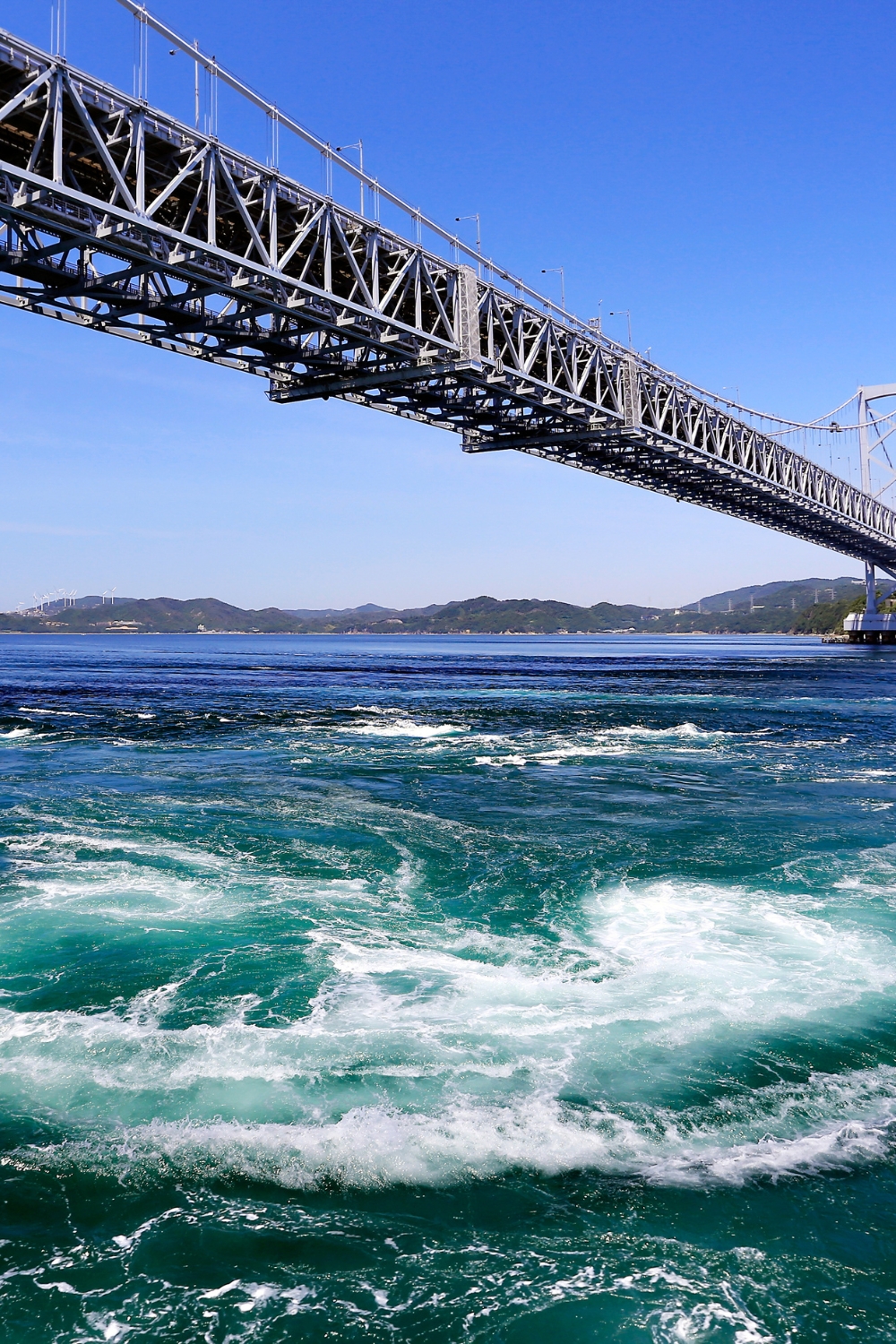
The Naruto Strait between Shikoku and Awaji Island creates some of the world’s largest whirlpools, with swirling waters reaching up to 20 meters in diameter. This natural phenomenon occurs when tidal currents meet the narrow strait, creating spectacular displays of nature’s power.
Tidal Science and Formation
The whirlpools form due to the significant difference in tidal timing between the Pacific Ocean and the Inland Sea. When tide levels differ by up to 1.5 meters, massive volumes of water rush through the narrow strait at speeds reaching 20 kilometers per hour.
The largest and most impressive whirlpools occur during spring tides when the tidal difference is greatest. These natural vortexes can last for several minutes, creating mesmerizing displays of swirling water that have fascinated visitors for centuries.
Viewing Options and Best Times
Multiple viewing platforms provide different perspectives of the whirlpools. The Naruto Bridge offers an overhead view from 45 meters above, while sightseeing boats provide close-up encounters with the swirling waters.
Special glass-bottom observation decks on the bridge allow visitors to look directly down into the whirlpools below. Boat tours navigate carefully around the edges of larger whirlpools, providing thrilling but safe viewing experiences.
Best viewing times: Spring tides (twice monthly), high tide periods Viewing options: Bridge observation deck, sightseeing boats, glass-bottom platforms Whirlpool size: Up to 20 meters diameter Seasonal variation: Strongest in spring and autumn
6. Kumano Hongu Taisha – Sacred Pilgrimage Site
Kumano Hongu Taisha serves as one of the most important shrines along the Kumano Kodo pilgrimage routes, offering spiritual significance and architectural beauty in a mountain forest setting. This sacred site has drawn pilgrims for over 1,000 years seeking spiritual purification and divine blessing.
Spiritual Heritage and Pilgrimage Traditions
The shrine complex represents the culmination of the Kumano Kodo pilgrimage, one of only two UNESCO World Heritage pilgrimage routes in the world. Pilgrims traditionally completed arduous mountain journeys to reach this sacred destination, seeking spiritual transformation through physical challenge.
The main shrine buildings showcase traditional Shinto architecture with vermillion pillars and curved rooflines harmoniously integrated into the forest environment. The shrine’s spiritual atmosphere is enhanced by ancient cedar trees that have witnessed centuries of pilgrimage.
Modern Pilgrimage and Cultural Experiences
Today’s pilgrims can choose from various route options, from challenging multi-day hikes to shorter day walks that still capture the spiritual essence of the journey. The shrine provides traditional pilgrimage certificates and stamps for completed routes.
The surrounding area offers insights into traditional Japanese mountain culture, including local festivals, traditional crafts, and mountain cuisine. Pilgrimage accommodations range from traditional temple lodgings to modern hotels catering to international visitors.
UNESCO Status: World Heritage pilgrimage route Pilgrimage options: Multiple route lengths and difficulty levels Cultural significance: 1,000+ years of pilgrimage history Best time: Spring through autumn for hiking conditions
7. Kotohira-gu Shrine – Golden Palace Temple
Kotohira-gu Shrine, affectionately known as “Konpira-san,” requires a challenging climb of 1,368 stone steps to reach its main buildings. This mountaintop shrine complex rewards determined visitors with spectacular views and deep spiritual significance related to sea travel and safety.
Historical Importance and Maritime Connections
The shrine has protected sailors and sea travelers for over 1,000 years, earning devotion from fishermen, merchants, and naval personnel throughout Japanese history. Traditional wooden ship models and maritime offerings fill the shrine’s treasure houses, demonstrating its continuing importance to sea-based communities.
The shrine’s golden main hall, rebuilt in 1878, represents some of Japan’s finest religious architecture. Intricate wood carvings, gold leaf decorations, and traditional craftsmanship create an atmosphere of reverence and artistic beauty.
The Sacred Climb and Spiritual Journey
The 1,368-step climb to the main shrine represents a spiritual journey as much as a physical challenge. Stone steps wind through multiple shrine buildings, each offering rest points and spiritual preparation for the final ascent.
Traditional palanquin bearers still carry visitors who cannot complete the climb independently, maintaining a service that has existed for centuries. The physical effort required to reach the shrine enhances the spiritual significance of the final destination.
Total steps: 1,368 to main shrine, 1,368 additional to inner shrine Climbing time: 30-45 minutes to main shrine Historical significance: Maritime protection, naval devotion Special features: Traditional palanquin service, treasure houses
8. Shimanami Kaido – Cycling Paradise
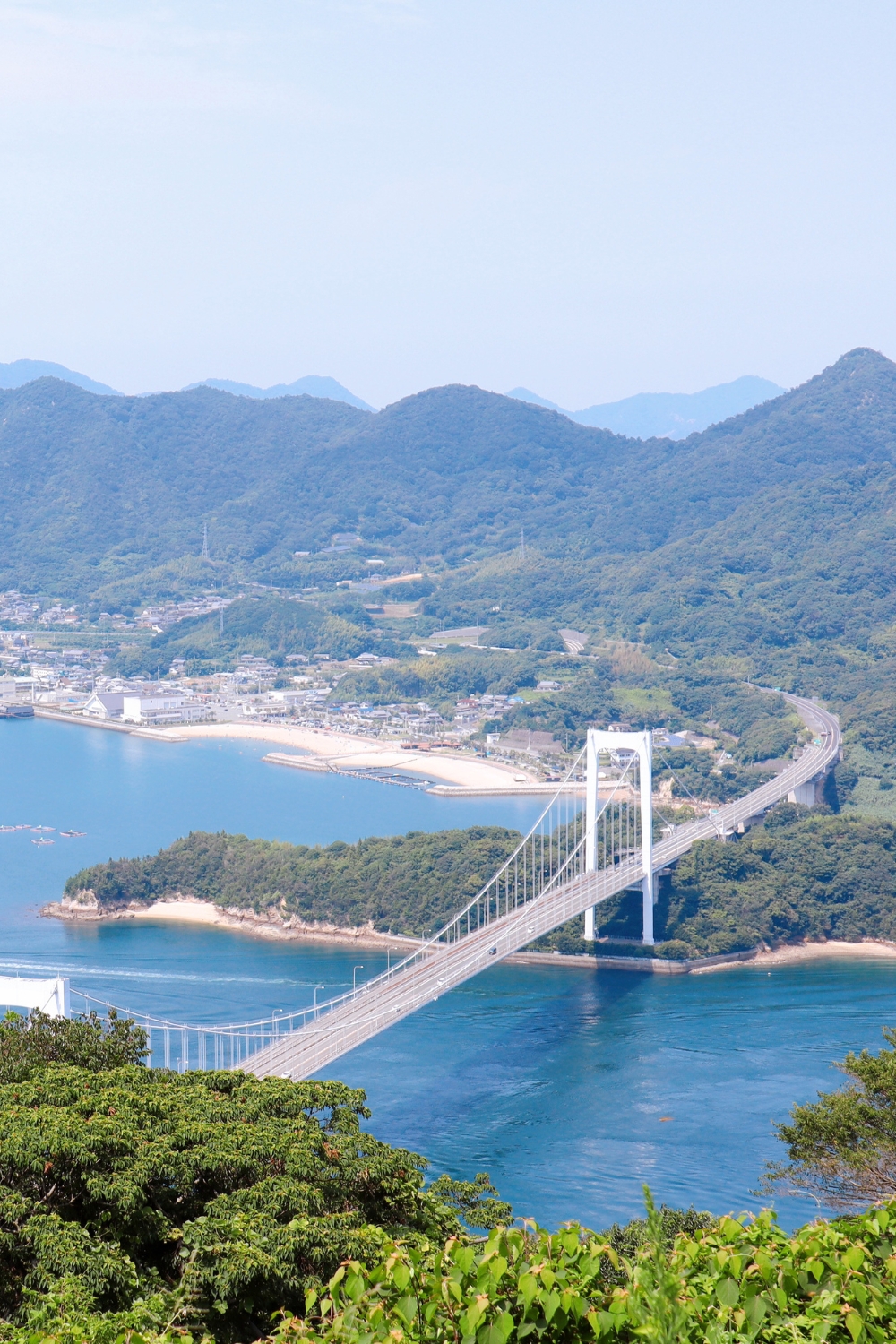
The Shimanami Kaido represents one of the world’s most beautiful cycling routes, connecting Shikoku to Honshu via a series of bridges spanning six small islands in the Inland Sea. This 70-kilometer route offers spectacular ocean views, charming island communities, and perfectly maintained cycling infrastructure.
Engineering Marvel and Route Design
The route uses six major bridges, each an engineering masterpiece spanning the waters between islands. The cycling path runs separately from vehicle traffic, ensuring safety while providing unobstructed views of the surrounding seascape.
Each island along the route offers unique attractions, from art museums and local temples to traditional fishing villages and scenic viewpoints. The route’s design allows cyclists to experience both the journey and destinations at their own pace.
Cycling Culture and Island Experiences
The route has become a pilgrimage destination for cycling enthusiasts worldwide, offering perfectly maintained paths, comprehensive support services, and bicycle rental facilities on each island. Electric bike options make the route accessible to cyclists of all fitness levels.
Local communities along the route have embraced cycling tourism, offering specialized accommodations, cycling-friendly restaurants, and cultural experiences designed for international visitors. The route demonstrates how infrastructure development can enhance both tourism and local communities.
Total distance: 70 kilometers Number of bridges: 6 major spans Cycling time: 1-3 days depending on pace and stops Support services: Bike rentals, repair stations, specialized accommodations Best time: Spring and autumn for comfortable temperatures
9. Kochi Castle – Original Edo Architecture
Kochi Castle stands as one of Japan’s twelve remaining original castles, offering visitors the rare opportunity to explore authentic Edo-period architecture. The castle’s unique design and complete preservation make it invaluable for understanding Japanese castle construction and samurai culture.
Architectural Uniqueness and Preservation
Unlike many Japanese castles that are modern reconstructions, Kochi Castle retains its original wooden structure dating from 1748. The castle’s compact design integrates residential and defensive functions, with the lord’s living quarters connected directly to the main keep.
The castle’s architecture reflects adaptations to local climate conditions, including raised floors for ventilation and extended eaves for rain protection. These practical modifications demonstrate how castle design evolved to meet regional environmental challenges.
Samurai Culture and Historical Exhibits
The castle houses extensive exhibits on samurai culture, local history, and castle construction techniques. Original artifacts, weapons, and household items provide insights into daily life during the Edo period.
The castle grounds include traditional gardens and the remains of secondary defensive structures. Evening illumination creates dramatic shadows and highlights the castle’s architectural details, making it particularly photogenic after dark.
Construction date: 1748 (current structure) Architectural significance: Original Edo-period castle Special features: Integrated residential and defensive design Location: Central Kochi city, easy access Cultural exhibits: Samurai artifacts, local history, construction techniques
10. Takachiho Gorge – Dramatic Natural Beauty
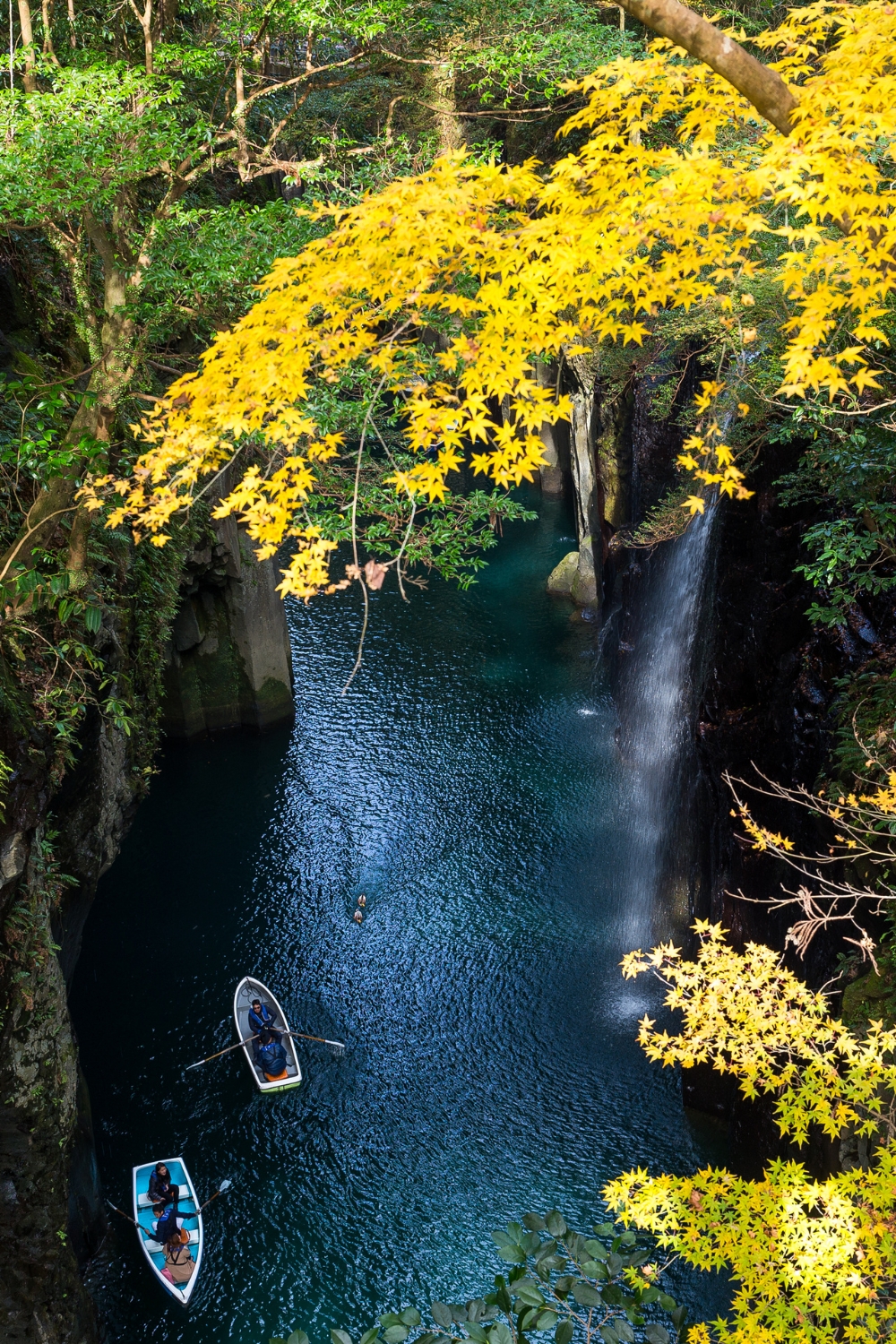
Takachiho Gorge showcases some of Japan’s most dramatic natural scenery, featuring towering volcanic cliffs, emerald waters, and the spectacular Manai Falls cascading 17 meters into the gorge below. This geological wonder offers both natural beauty and connections to Japanese mythology.
Geological Formation and Natural Features
The gorge formed through volcanic activity and river erosion over thousands of years, creating sheer cliffs of columnar basalt that rise up to 100 meters above the Gokase River. The unique geological formations create a natural amphitheater of stunning beauty.
The gorge’s most famous feature, Manai Falls, drops directly from the cliff face into a pool of crystal-clear water. The waterfall’s power and beauty have inspired countless artists and poets throughout Japanese history.
Mythological Significance and Cultural Connections
According to Japanese mythology, Takachiho Gorge is where the sun goddess Amaterasu hid in a cave, plunging the world into darkness. The area plays a central role in Japan’s creation myths and remains an important spiritual site.
Traditional kagura (sacred dance) performances take place in the nearby Takachiho Shrine, continuing ancient traditions that connect the natural landscape to spiritual beliefs. These performances provide cultural context for the area’s mythological significance.
Gorge depth: Up to 100 meters Waterfall height: 17 meters (Manai Falls) Geological features: Columnar basalt cliffs Cultural significance: Japanese creation mythology Activities: Boat rentals, hiking, photography, cultural performances
Planning Your Shikoku Adventure
Transportation and Getting Around
Shikoku’s compact size makes it ideal for exploration by various transportation methods. The JR Shikoku railway network connects major cities and tourist destinations, while local bus services reach more remote areas like Iya Valley and mountain shrines.
Rental cars provide maximum flexibility for exploring rural areas and mountain destinations. The island’s well-maintained roads and clear signage make driving accessible for international visitors with proper permits.
For active travelers, bicycle touring offers an immersive way to experience Shikoku’s landscapes and communities. The Shimanami Kaido cycling route provides world-class infrastructure, while other areas offer more adventurous cycling opportunities.
Seasonal Considerations and Best Times
Spring (March-May): Cherry blossom season brings spectacular displays at castles and temples. Weather is mild and comfortable for outdoor activities, but popular destinations can be crowded.
Summer (June-August): Hot and humid conditions make mountain destinations like Iya Valley and Takachiho Gorge particularly appealing. This is the best time for river activities and mountain hiking.
Autumn (September-November): Fall colors create stunning displays throughout the island. Cool, comfortable weather makes this ideal for pilgrimage walks and cycling adventures.
Winter (December-February): Mild temperatures and fewer crowds make winter appealing for hot spring visits and cultural experiences. Some mountain areas may have limited access due to weather.
Cultural Etiquette and Local Customs
Respect for local customs enhances your Shikoku experience significantly. Remove shoes when entering temples, shrines, and traditional accommodations. Bow appropriately when greeting local people and receiving services.
Photography etiquette varies by location. Most outdoor areas welcome photography, but always ask permission before photographing people, especially at religious sites. Some temple interiors prohibit photography entirely.
Hot spring etiquette requires washing thoroughly before entering baths, keeping towels out of the water, and maintaining quiet, respectful behavior. These customs ensure everyone can enjoy the therapeutic benefits of onsen culture.
Conclusion
Shikoku Island offers an extraordinary diversity of experiences that showcase Japan’s natural beauty, spiritual heritage, and cultural authenticity. From the dramatic whirlpools of Naruto Strait to the ancient pilgrimage paths of Kumano Kodo, from perfectly preserved castles to world-class cycling routes, each destination reveals different facets of this remarkable island.
The island’s greatest strength lies in its ability to provide both adventure and tranquility, spiritual experiences and natural wonders, historical insights and modern innovations. Unlike Japan’s more crowded destinations, Shikoku allows visitors to experience authentic Japanese culture at a more relaxed pace.
Whether you’re seeking spiritual enlightenment on ancient pilgrimage routes, natural beauty in mountain gorges and coastal landscapes, or cultural immersion in traditional hot springs and historic sites, Shikoku delivers experiences that create lasting memories and deep connections to Japanese heritage.
The island’s compact size and excellent infrastructure make it possible to experience multiple attractions in a single visit, while its depth of cultural and natural offerings rewards extended exploration. Plan your Shikoku adventure today and discover why this hidden gem continues to captivate travelers seeking authentic Japanese experiences beyond the typical tourist trail.
